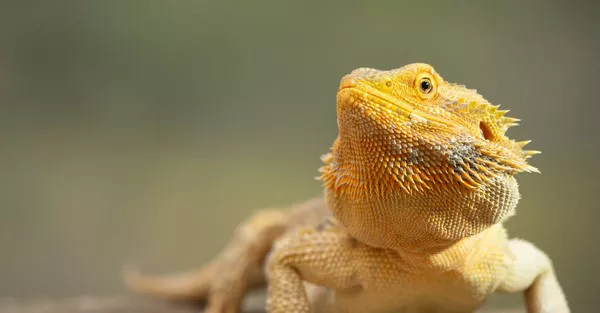Green anoles (Anolis carolinensis) are a common and captivating species of small lizard that has become a popular choice as a pet reptile. As responsible pet owners, it is essential to provide our scaly friends with a balanced diet to ensure their health and well-being. While their primary diet consists of insects, the question arises: can green anoles eat mealworms? In this article, we will explore the dietary habits of green anoles, the nutritional value of mealworms, and the potential benefits and risks of incorporating mealworms into their diet.
1. The Natural Diet of Green Anoles
In the wild, green anoles are insectivores, meaning they primarily feed on insects such as crickets, grasshoppers, ants, flies, and small spiders. Their diet also includes other small invertebrates found in their natural habitat, such as caterpillars and beetles. This diverse range of prey provides essential nutrients required for their growth, energy levels, and overall health.
2. Nutritional Value of Mealworms
Mealworms (Tenebrio molitor) are the larvae of darkling beetles and are widely used as a feeder insect for various reptiles, including green anoles. They are an excellent source of protein, essential amino acids, fat, vitamins, and minerals. The nutritional value of mealworms makes them a suitable potential addition to a green anole‘s diet.
Protein: Mealworms are rich in protein, which is vital for muscle development and overall body functions of green anoles.
Fats: These insects contain healthy fats, providing a concentrated source of energy for reptiles.
Vitamins and Minerals: Mealworms contain vitamins such as B-vitamins (B1, B2, B3, B5, and B6) and minerals like iron, magnesium, and phosphorus, which are essential for various physiological processes in green anoles.
3. Incorporating Mealworms into a Green Anole’s Diet
While mealworms have nutritional benefits, it is crucial to offer them as part of a well-rounded diet. Green anoles thrive on a varied diet, so mealworms should be supplemented with other appropriate feeder insects to ensure balanced nutrition. Crickets, roaches, and waxworms can be excellent additions to the diet to maintain a diverse nutritional profile.
4. Feeding Frequency and Portion Size
Feeding frequency and portion size are essential factors to consider when introducing mealworms into a green anole’s diet. Younger anoles may require more frequent feeding compared to adult ones. A general guideline is to feed adult green anoles every other day, providing them with a few appropriately sized mealworms per feeding. For juveniles, daily feeding might be necessary to support their rapid growth and development.
5. Gut Loading and Dusting
To enhance the nutritional value of mealworms, a process called gut loading is recommended. Gut loading involves feeding the mealworms nutritious foods, such as fresh fruits and vegetables or specialized gut-loading diets, before offering them to green anoles. This ensures that the reptile receives not only the nutrients from the mealworms but also the nutrients from the foods the mealworms have consumed.
Additionally, dusting the mealworms with vitamin and mineral supplements is essential. Reptile-specific calcium and vitamin powders can be lightly dusted onto the insects before feeding. This practice ensures that green anoles receive the necessary vitamins and minerals that might not be adequately provided by the mealworms alone.
6. Potential Risks and Considerations
While mealworms can be a beneficial part of a green anole’s diet, there are some potential risks and considerations to keep in mind:
Chitin Content: Mealworms have a tough exoskeleton made of chitin, which can be difficult for green anoles to digest in large quantities. Therefore, it is crucial to moderate the number of mealworms offered and to vary their diet with softer-bodied insects.
Moisture Content: Mealworms have a low moisture content, which may not be sufficient to hydrate green anoles adequately. Providing a separate water source for hydration is crucial.
Calcium-Phosphorus Ratio: The calcium-phosphorus ratio in mealworms is not ideal for green anoles. High phosphorus levels can inhibit calcium absorption, potentially leading to metabolic bone disease. To counteract this, dusting the mealworms with calcium powder is essential, as mentioned earlier.
Allergies and Sensitivities: Just like any other food, some green anoles may have allergies or sensitivities to mealworms. Observing the pet’s behavior and health after introducing mealworms can help identify any adverse reactions.
Conclusion
In conclusion, green anoles can indeed eat mealworms and benefit from their nutritional value. As insectivores, they require a varied diet to thrive, and mealworms can be a valuable part of this diet. By gut loading and dusting the mealworms with appropriate supplements, their nutritional value can be further enhanced.
However, it is crucial to remember that mealworms should not be the sole food source for green anoles. To ensure the reptiles’ optimal health, the diet should consist of a variety of insects and other feeder options. Furthermore, monitoring their intake and overall well-being is essential to address any potential health concerns promptly.
As responsible pet owners, providing a balanced diet, along with appropriate housing and care, will contribute to the long and healthy life of these fascinating creatures.
Related Topics:


























